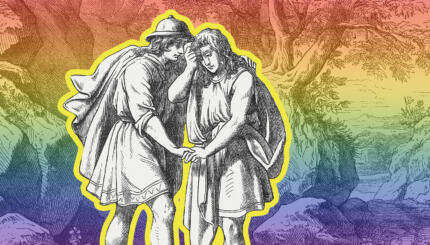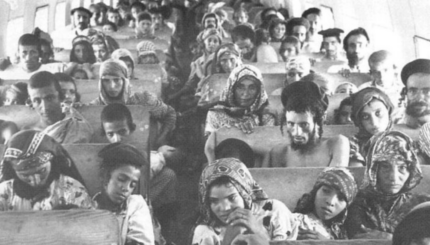It’s June, which means the end of school, the start of warm weather, summer, and Pride month!
Pride Month is celebrated annually in June to commemorate the Stonewall Riots in 1969, and today serves as a celebration of queer culture, a chance for the queer community to come together publicly, and a reminder of the work yet to be done for the queer community. Pride Parades, which happen annually in most major cities are an outflow of support and community.
For many queer folks, Pride is also a time when they can be more open or public about their identities. However, this is an opportunity that only some of us are fortunate enough to have. For many people, it is uncomfortable or even dangerous to come out publicly due to religious, familial, or social restraints. Additionally, as a parade in a crowded space, it is difficult or impossible for some folks to attend pride due to mobility issues, mental health issues, or logistical issues.
Below is a list of ways that those who cannot publically march in a Pride parade for any reason can discreetly participate in Pride Month.
- Journaling
One private way to explore one’s identity is through journaling.. Here are some prompts to help you start:
- What does my identity mean to me? How do I fit into my identity?
- How does my queerness affect my day-to-day life?
- Write about your “queer awakening” – when did you realize you were queer? How?
- Why am I proud (or not proud) of my queer identity?
- What would I like to say to other queer people in my community, whether or not I currently know who they are?
If words aren’t your thing, creating artwork can also be a great way of creatively exploring your queer identity!
- Tzedakah
Giving Tzedakah, or charitable donations, to LGBT+ organizations can be a concrete way to support the LGBT+ community, if you are able. Donations to organizations can be anonymous, and can even be cash if you are concerned about leaving a paper trail. Additionally, volunteering at one of these organizations can help bring you together with other queer folks. Below is a list of some great LGBT+ organizations that accept donations of time or money.
- Eshel – Eshel is an organization dedicated to creating understanding and support for LGBTQ people in traditional communities. They offer great events and resources designed especially for observant Jews.
- GLSEN – GLSEN is an organization that seeks to improve the education system that too frequently allows lesbian, gay, bisexual, transgender, queer and questioning (LGBTQ) students to be bullied, discriminated against, or fall through the cracks.
- Human Rights Campaign – The Human Rights Campaign is one of the largest civil rights organizations for the LGBTQI+ community, and they’ve continued to take action and organize around local issues. With 1.5 million supporters and members nationwide, they just launched their Summer of Action efforts.
- The Transgender Law Fund – TLC has a mission to “change law, policy and attitudes so that all people can live safely, authentically and free from discrimination regardless of their gender identity or expression.” They offer services such as the Detention Project to help trans people in prison, immigration detention and state hospitals.
- The Trevor Project – The Trevor Project is the leading national organization providing crisis intervention and suicide prevention services to lesbian, gay, bisexual, transgender, queer & questioning (LGBTQ) young people under 25.
- Victory Fund – the Victory Fund provides campaign, fundraising and communications support to LGBTQ candidates to increase the number of openly LGBTQ elected officials – because representation is power. When LGBTQ elected leaders are in the room, they humanize our lives, impact policy and legislative debates and influence their colleagues to vote in favor of equality. LGBTQ elected officials are our best defense against anti-LGBTQ efforts at all levels of government and are best positioned to advance equality for our community.
- Keshet – Not to toot our own horn, but Keshet is also a great organization to donate time or money to. Read more about our story here.
3.Cultural Exploration
Reading books or watching movies with LGBT+ themes, either alone or with a trusted friend, can be a great way to explore your own identity as well as queer culture at large. This can include novels, poetry, films, short stories, erotica, and more.
- Text Study
Text study can be a great way to learn more about what Judaism says about sexuality and gender and new queer interpretations. A few suggestions of texts to focus on are listed below.
- Leviticus 18:22 – Leviticus 18:22 is generally cited as the biblical basis for anti-homoeroticism in Judaism. Jan Joosten has a great article, A New Interpretation of Leviticus 18:22 (par. 20:13) and its Ethical Implications, which focuses on alternative interpretations of this passage.
- Androgynous – In Jewish law, there is space for non-traditional gender in laws about the Androgynous- someone whose external genitals are ambiguous. While this is based on intersexuality rather than transgender identities, it does open up the possibility of more than two genders – in fact, traditionally there are 7 genders (Bikkurim 4:1)! Fonrobert and Strassfield both write extensively on this subject.
- David and Jonathan in Samuel I & II – David and Jonathan are two great friends in the Torah, who are often interpreted as gay in contemporary queer Jewish thought. Much of the language used to describe their relationship can be read as romantic, and in 2 Samuel 1:26 David says about Jonathan “Your love was wonderful to me More than the love of women.” (tr. Sefaria)
- Naomi and Ruth in the Book of Ruth – Naomi and Ruth are another example of characters in the Torah who have come to be interpreted as queer. The vow that Ruth makes to Naomi in Ruth 1:27, “wherever you go, I will go; wherever you lodge, I will lodge; your people shall be my people, and your G!d my G!d.” is often used as marriage vows. (tr. Sefaria)
- There are countless other readings of traditional Jewish texts through a queer lens. To explore our collection, check out our Gender Fluidity Source Sheet and Torah Queeries collection.
There are so many ways to celebrate pride, both publicly and privately. However you are celebrating, we hope you find meaning and community this time of year.
If you are looking for more resources, check out our youth resource list here or our general resource list here.


